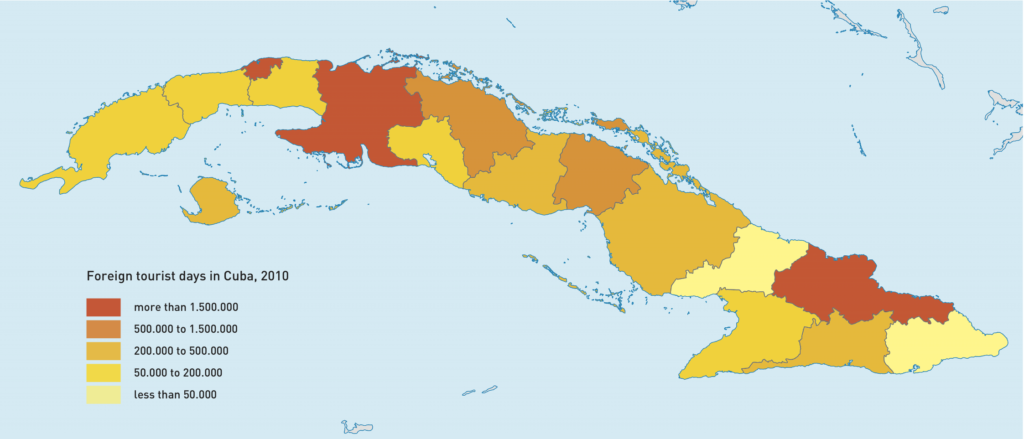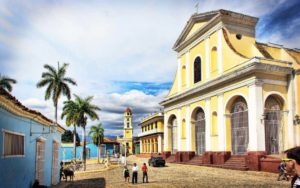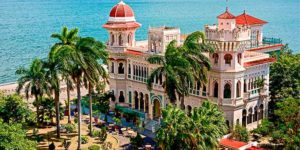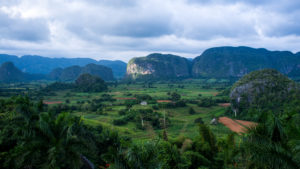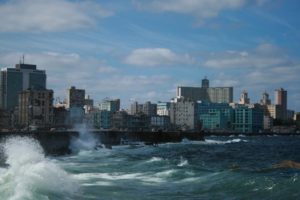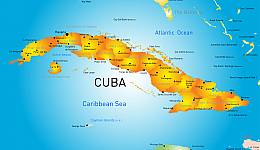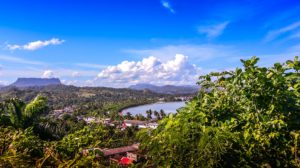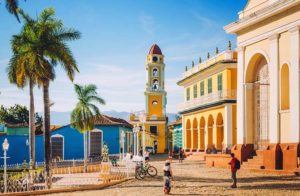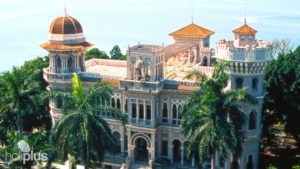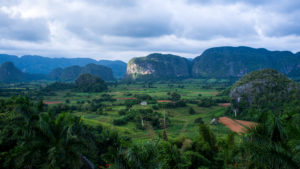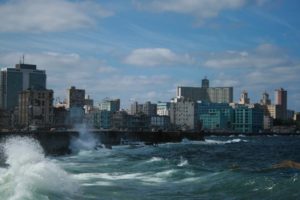ALGUNOS DE LOS PUNTOS MÁS HERMOSOS DE LA ISLA DE CUBA.
Cuba es una isla larga y delgada ubicada en el Caribe y conocida por su colorida cultura, playas idílicas y frondosos bosques. Gran parte de las más de 42,000 millas cuadradas de tierra del país ha sido reconocida por el Patrimonio Mundial de la UNESCO por su belleza e importancia histórica. Aquí hemos redondeado una lista que incluye algunos de esos sitios y más allá como los lugares más hermosos de Cuba.
BARACOA.
Baracoa es un pedazo de paraíso poco conocido en Cuba. Fundada en 1511, es la ciudad más antigua del país. A diferencia de los complejos turísticos, esta ciudad tiene una playa aislada de arena negra, arroyos pacíficos, cascadas para explorar y bañarse, y bosques exuberantes para caminar. El Yunque, una montaña famosa por su cima plana de 589 metros de altura, ofrece increíbles vistas al mar. Aunque la caminata es casi totalmente vertical, el camino está sombreado y la vista impresionante merece la pena. El lugar está lleno de deliciosas frutas, mangos, papayas, las mejores de la región.
TRINIDAD
La colección de Trinidad de una historia bien conservada es superada solo por La Habana. El sitio de la UNESCO no ha cambiado mucho desde el siglo XIX, y tiene una impresionante cantidad de edificios españoles y coloniales vibrantes. La Playa Ancón, una playa en la costa sur es un lugar hermoso. El casco antiguo de Trinidad está abierto sólo para el tráfico de caballos y a pie. En cada esquina hay otra delicia pintoresca en Trinidad.
CIENFUEGOS
Cienfuegos es una ciudad con un claro estilo europeo lleno de arquitectura grandiosa. Llamada el París de Cuba, esta ciudad tiene influencias francesas tanto en sus costumbres como en su estilo. La hermosa Bahía de Jagua y las galerías de arte que rodean la Plaza de Armas son muy conocidas porque el lugar hace de esta ciudad una de las mejores huellas con mansiones coloridas.
VALLE DE VIÑALES
Este extenso valle enclavado en la sierra de los Órganos. El sitio de la UNESCO está lleno de pequeñas ciudades, imponentes acantilados de piedra caliza redondeados, pinos rectos y árboles tradicionales y granjas de tabaco. Las marcas de cigarros más grandes del país se suministran con tabaco cultivado en el Valle de Viñales, el área que personifica la vida rural cubana.
CAYO COCO
Caya Coco es una impresionante playa rural famosa por aparecer en dos de las novelas de Hemingway, Islands in the Stream y The Old Man and the Sea. La playa está conectada con Cuba continental por un puente, está cerca de la isla archipiélago Jardines del Rey. Las playas de arena blanca están cubiertas por cielos sin nubes y mucha luz solar, y el suave agua del agua es un hermoso color turquesa. El Parque Natural el Bagá está lleno de cocodrilos, tortugas y flamencos.
EL MALECÓN, HABANA.
Este famoso paseo marítimo es una de las zonas más populares de La Habana y una parada esencial cuando se encuentra en La Habana. La idea se concibió en 1901 y el Malecón se construyó en parte en 1902. El camino de 7 kilómetros ofrece un lugar para pasear por el mar y contemplar una mezcla bien conservada de diferentes estilos de construcción del siglo XX en hermosos pasteles. Siempre hay algo que hacer en el malecón. Desde personas observando y descansando junto al dique durante el día y la población que visita el lugar por la noche.
 WWW.THECUBANHISTORY.COM — YESTERDAYS, TODAY, ALWAYS.
WWW.THECUBANHISTORY.COM — YESTERDAYS, TODAY, ALWAYS.
SOME OF THE MOST BEAUTIFUL SPOTS IN THE ISLAND OF CUBA.
Cuba is a long, thin island located in the Caribbean and known for its colorful culture, idyllic beaches, and lush forests. Much of the country’s 42,000-plus square miles of land has been recognized by UNESCO World Heritage for its beauty and historic significance. Here we’ve rounded up a list including some of those sites and beyond as the most beautiful spots in Cuba.
BARACOA.
Baracoa is a little-known slice of paradise in Cuba. Founded in 1511, it is the oldest city in the country. Unlike touristy resorts, this town has a secluded black-sand beach, peaceful streams, crashing waterfalls to explore and bathe in, and lush forests to hike through. El Yunque, a mountain famous for its flat top at 589 meters high offers incredible views of the sea. Although the hike up is almost entirely vertical, the pathway is shaded and the breathtaking view is so worth the sweat. The Place is full of delicious fruits, mangoes, papayas the best in the region.
TRINIDAD
Trinidad’s collection of a well-preserved history is second only to Havana. The UNESCO site has not changed much since the 1800s, and it has an impressive number of vibrant Spanish-colonial buildings. The Playa Ancon, a beach on the southern coast is a beautiful spot. Trinidad’s old town is open only to foot and horse traffic. Around every corner is another picturesque delight in Trinidad.
CIENFUEGOS
Cienfuegos is a city with a clear European style full of grandiose architecture. Called the Paris of Cuba, this city has French influences in both its customs and style. The beautiful Bahia de Jagua and the art galleries around the Plaza de Armas very well know as the spot make this city one of the best trace with colorful mansions.
VALLE DE VIÑALES
This sprawling valley nestled in the Sierra de Los Órganos mountain range. The UNESCO site is filled with tiny towns, towering, rounded limestone cliffs, stick straight pine trees, and traditional tobacco farms. The biggest cigar brands in the country are supplied with tobacco grown in the Valle de Viñales, the area that epitomizes rural Cuban life.
CAYO COCO
Caya Coco is a stunning rural beach famous for appearing in two of Hemingway’s novels, Islands in the Stream and The Old Man and the Sea. The beach is connected to mainland Cuba by a bridge, is near to the Jardines del Rey archipelago island. The white-sand beaches are covered by cloudless skies and plenty of sunshine, and the gently lapping water is a beautiful turquoise color. The Parque Natural el Bagá is full of crocodiles, turtles, and flamingoes.
EL MALECÓN, HABANA.
This famous waterfront promenade is one of Havana’s most popular areas and an essential stop when you are in Habana. The idea was conceived in 1901, and the Malecón was partly built in 1902. The 7-kilometer road offers a place to walk along the sea and view a well-preserved mixture of different 20th-century building styles in beautiful pastels. There is always something to do on the Malecón. From people watching and lounging by seawall during the day and the population visitors of the place at night.
Agencies/ WIki/ CulturalLife/ Excerpts/ Internet Photos/ Arnoldo Varona/ www.TheCubanHistory.com
THE CUBAN HISTORY, HOLLYWOOD.
 WWW.THECUBANHISTORY.COM — YESTERDAYS, TODAY, ALWAYS.
WWW.THECUBANHISTORY.COM — YESTERDAYS, TODAY, ALWAYS.



 < SOME of the Most Beautiful Spots in the Island of Cuba. PHOTOS.
< SOME of the Most Beautiful Spots in the Island of Cuba. PHOTOS.